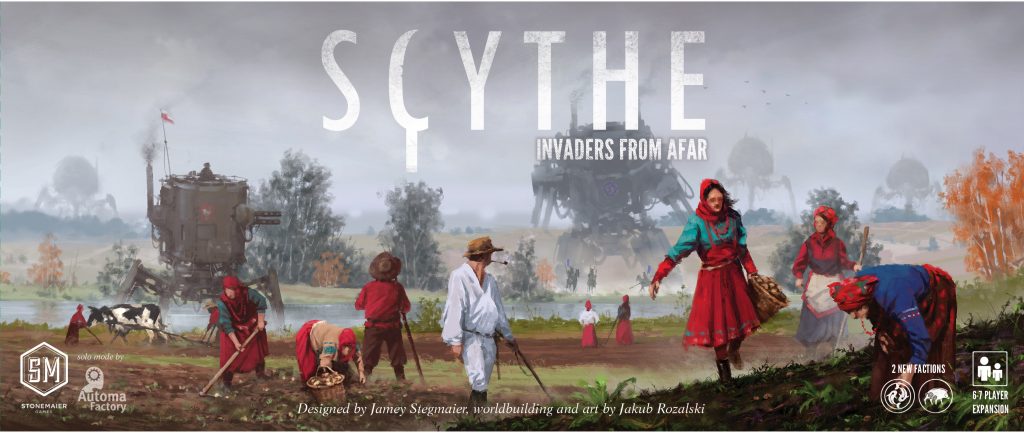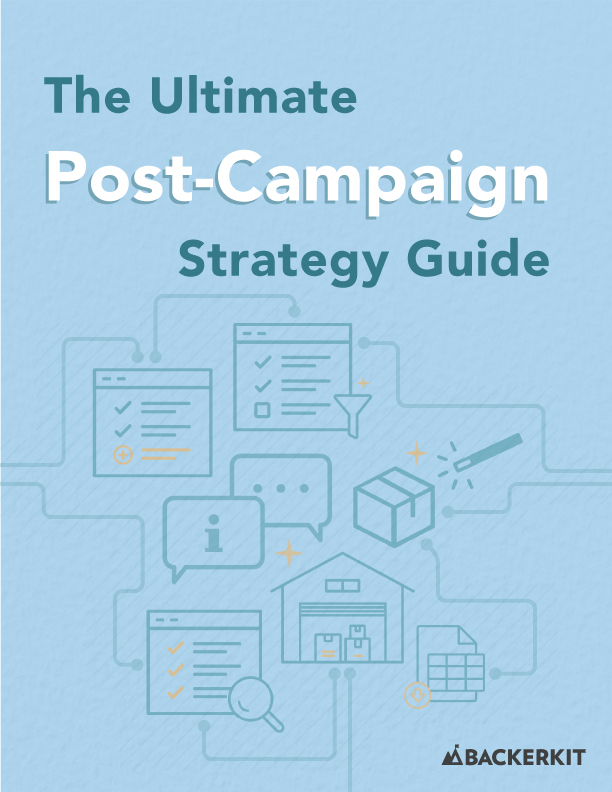For some creators, Kickstarter isn’t simply a way to bring products to life – it’s a tool for market validation. But going to market can be a complicated process, especially for first-time creators. Questions abound.
How do you formulate a retail distribution strategy? Should you sell your product on Amazon? How do you go about determining a retail price?

We spoke to Jamey Stegmaier, a veteran game designer and verifiable crowdfunding expert, to get his advice. He has raised a total of $3.2 million on Kickstarter over eight campaigns, and provides invaluable advice to the crowdfunding community on his blog and in his book, A Crowdfunder’s Strategy Guide. He is also the designer of the tabletop games Viticulture, Euphoria, Scythe, and Charterstone.
Stegmaier generously provided us his insights and experiences on bringing products to market.
What are the pros and cons of selling your product on your own website versus selling on Amazon or other online vendors?
At Stonemaier Games, our strategy for selling on various websites has evolved over time. There were periods where I used PayPal, Shoplocket, Celery, and Shopify on our website, sometimes in various configurations. There were about two years where we did most of our Kickstarter fulfillment through Amazon, so we sold excess inventory through Amazon as well. And there were times where selling products directly to consumers was a big part of our strategy, but it’s less than 1% of our sales.
Pros: The main advantages of selling your product on your website are (a) search engines are more likely to direct people to your website if it’s already the main destination, (b) you can feature your full product line all in one place, and (c) you have full control over the way your content is presented.
Cons: Amazon has the 14th most-visited website in the world. Even if you get a lot of traffic on your website, it’s not going to come close to Amazon. Your product is simply easier for people to discover and buy on Amazon.
What are the most common mistakes creators make when trying to shift their product into the retail market?
Among many other mistakes, one, in particular, I learned a few years ago while trying to both sell to consumers and sell to retailers. Instead of selling one of our games at MSRP on the Stonemaier website and Amazon, I tried to price match with online retailers. I was mistakenly viewing them as competitors instead of customers. I quickly changed this strategy.
When creators shift their product into the retail market, you have to make a key decision: Do I want to continue to try to sell to hundreds or thousands of individual customers via e-commerce, or do I want to focus on having a few clients (distributors) who buy hundreds of games at a time?
I’ve seen companies use one or the other separately, but rarely both.
The other big mistake I’ve experienced and have seen from other creators is that they make far too many or far too few products for retail. It’s really hard to estimate that sweet spot, so my recommendation is to get as much information as you possibly can when you’re deciding how many retail units to make. Post polls on social media, reach out to peers in the industry, and talk to retailers and distributors. The more information you have to inform the size of a retail print run, the better.
How has your distribution strategy changed since starting on Kickstarter?
For most of my Kickstarter campaigns, I used the same overall strategy for the budget: Any funds raised in excess of the cost of making and shipping games to backers would go towards retail products. So, for example, Scythe raised $1.8 million on Kickstarter. There were 21,000 copies of Scythe ordered during the campaign. Scythe is expensive to produce and ship, so I was left with enough funds to afford 5,000 retail copies of Scythe for the original print run.
Just over 100 of Scythe’s backers were retailers, which was great, and after Scythe I decided to shift almost entirely to a distribution/retailer strategy. That is, Stonemaier no longer uses crowdfunding to launch new products. Rather, I use other methods to gauge demand, improve the product, raise awareness, and building community. When I reprint a product or make something new, I sell it to a dozen or so distributors instead of thousands of individual people.
So even though direct transactions between me and a consumer are rare, the shift has vastly freed my time to interact with those people.
How did you determine retail prices?
I use a 5x multiplier on manufacturing cost, rounding down to what I consider a marketable price. For example, one copy of Viticulture costs about $12 to make, so the MSRP is $60.
This may seem like a gross inflation, but most distributors purchase games at a 60% discount, so a distributor pays me $24 for a copy of Viticulture. After freight shipping and brokerage fees, that’s about an $8 profit per copy of Viticulture.
With the benefit of hindsight, is there anything you would have done differently?
Yes! Many, many things. Though many of them have happy endings. In fact, one of my biggest regrets ended up resulting in an entire product line for Stonemaier.
On the Euphoria campaign, I offered a Kickstarter exclusive stretch goal enhancement of realistic resource tokens: gold, stone, and bricks that were crafted to look and feel like smaller versions of the real thing. Backers seemed to really enjoy these components, and so did their friends. I started getting a number of e-mails from people asking me if they could buy the realistic resource components.
But because I had put the “Kickstarter exclusive” label on those components, out of respect for the pact I had with my Euphoria backers, I had to say no to those requests. And it really started to weigh on me. The reason I create board games is to bring joy to people and to include them in this wonderful hobby, not exclude them. So it’s one of my biggest regrets to have put the “KS exclusive” label on those components, and I pledged to never do that again.
In the end, I decided to respect backers by throwing away the expensive molds we used to forge those realistic components, and we decided to create an all-new line of products called Stonemaier Games Treasure Chests.
I’ve had a ton of fun creating those tokens over the last few years with sculptor Scott Wadyko, and now we sell them individually through Top Shelf Gamer.
What sort of marketing strategies should creators have in place to drive sales and expand their customer base after their campaign is over?
Here are a few things we’ve done at Stonemaier that seem to work:
When a project ends, we use Kickstarter’s Spotlight feature to update certain aspects of the project page. Most importantly, I change the button at the top of the project page to take people directly to the “Buy” page on our website.
- I have a home base for all Stonemaier-related content (www.stonemaiergames.com). Perhaps the most important marketing strategy for the website is that it’s where people can sign up for our e-newsletter, which I believe is the most invaluable device for conveying information to potential customers.
- We now have Facebook groups for each of our brands (Scythe, Viticulture/Tuscany, Between Two Cities, etc). These provide little pockets for people who love or are interested in those games to talk about them, share photos, ask questions, etc. I’m very active in those groups, so they offer a platform for the personal touch I tried to create on Kickstarter.
- I send a special e-newsletter just to distributors and retailers every one to two months to let them know what we have in stock, what’s arriving soon, and what we’re working on. I’ve found that retailers are fantastic ambassadors if they have information, so I’ve sought to give them that information on a regular basis.
- Reviewers are one of our best marketing tools, so we send out a number of games to reviewers when they’re available.
- Other than our annual charity auction, Stonemaier hardly ever does contests, raffles, or giveaways. However, I’ve found that we get a fantastic return on investment on play-and-win sections at conventions. That’s when people can check out a game from a specific section of the library and write down their name on a piece of paper associated with that specific game. At the end of the convention, one name is drawn for each game. We often see that hundreds of people invest their time in learning and playing play-and-win games, so the chances they’ll purchase the game (if they don’t win it) are significantly higher than before.
- Overall, my favorite marketing tactic is to give people reasons to get a game to the table, whether it’s through promos, expansions, downloadable variants, etc. The more often a game hits the table, the greater the chance that someone will play it for the first time and will be compelled to invest in a copy for themselves.

